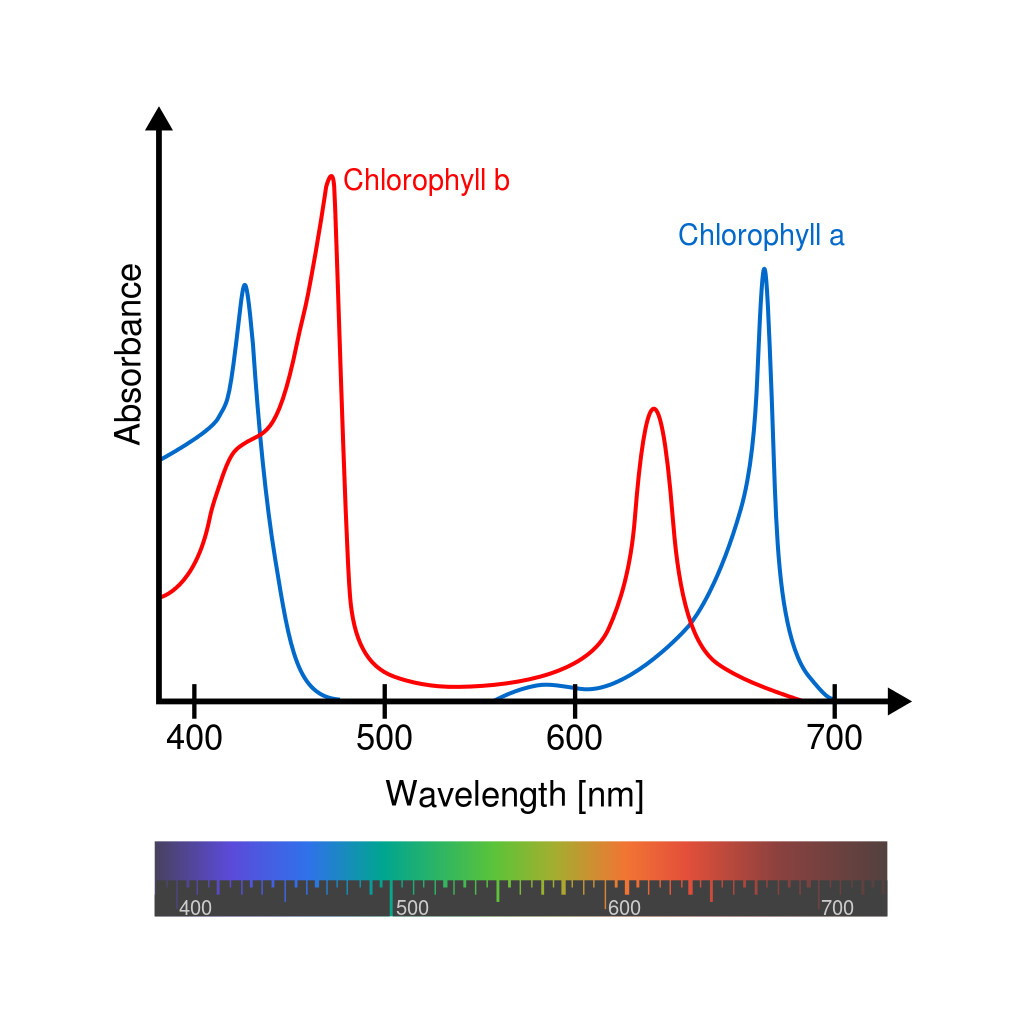Some Knowleadge Points about Light Spectrum and Plant Growth
Most of the photosynthetic activity is in the blue and red frequencies.
The amount of photosynthetic activity under each light spectrum

Blue light (430nm-450nm)
Those wavelengths encourage vegetative growth and are essential in lighting for seedlings and young plants during the vegetative stage of their growth cycle, especially when “stretching” must be reduced or eliminated. It also stimulates the production of secondary pigments which can enhance colors and is known to also stimulate Terpene (i.e. fragrance) production.
Red light (640nm-680nm)
Red light affects phytochrome reversibility and is the most important for flowering and fruiting regulation. These wavelengths encourage stem growth, flowering and fruit production, and chlorophyll production.
The 660nm wavelength has a very strong photosynthetic action and also exhibits the highest action on red-absorbing phytochrome regulated germination, flowering and other processes. Most effective for light cycle extension or night interruption to induce flowering of long-day plants or to prevent flowering of short-day plants.
Green light (500nm-550nm)
Most green light is reflected off the plant and plays a much smaller role in plant growth. However, there are some important aspects of light in this range so a certain amount of light in this spectrum range is beneficial. Green light is sometimes used as a tool for eliciting specific plant responses such as stomatal control, phototropism, photomorphogenic growth and environmental signaling. When combined with blue, red and far-red wavelengths, green light completes a comprehensive spectral treatment for understanding plant physiological activity. The function of green light is less well understood than the other spectrums, and there are only certain species of plants that require green light for normal growth. It’s effects appear to be very strain specific.
Photosynthesis isn't the only light-driven process in plants. Secondary metabolites (compounds) are created in a process called photomorphogenesis, many based on colors of light not used directly for photosynthesis.
Ultraviolet light (10nm-400nm)
Near-UV light is a very important contributor for plant colors, tastes and aromas。
Studies show that 385 nm UV light promotes the accumulation of phenolic compounds, enhances antioxidant activity of plant extracts, but does not have any significant effect on growth processes. UVB has also been demonstrated to elevate THC levels in Cannabis*
Far red (730nm)
Although the 730nm wavelength is outside the photosynthetically active range, it has the strongest action on the far-red absorbing form of phytochrome, converting it back to the red-absorbing form. It becomes necessary for plants requiring relatively low values of the phytochrome photoequilibrium to flower. Can be used at the end of each light cycle to promote flowering in short-day plants such as Cannabis.
Also, a higher ratio of far-red to red than found in sunlight can trigger the shade stretch response- where a plant when sensing it is shaded based on an elevated ratio of far-red to red- will stretch to try to elevate its canopy above its competitors.
--Above information are from network.
